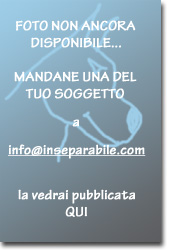Basset fauve de bretagne

We are collecting the material for being able to realize the card of the Bassett fauve de bretagne
FCI-Standard N° 36 / 05 .05. 2003/ GB
TRANSLATION: John Miller and Raymond Triquet.
ORIGIN: France.
DATE OF PUBLICATION OF THE ORIGINAL VALID STANDARD: 25.03.2003.
UTILISATION: Scent hound used for hunting rabbit, hare, fox, roe deer and wild boar.
F.C.I. CLASSIFICATION : Group 6 Scent hounds and related breeds.
Section 1.3 Small-sized hounds.
With working trial.
BRIEF HISTORICAL SUMMARY: This little basset has the same qualities as the breed from which it is derived: the griffon fauve de Bretagne. Very popular in its region of origin in the XIX century, it earned a national reputation in the course of the last 30 years of the XX century.
Its exceptional aptitude for hunting has allowed it to win the French Cup hunting trophy on rabbit a number of times and it has become very popular.
GENERAL APPEARANCE : The basset fauve de Bretagne, is a small, stocky hound, lively, rapid for its size. It benefits from enormous energy coupled with excellent hardiness.
BEHAVIOUR / TEMPERAMENT: The bassets fauves de Bretagne are impassioned hunters but are also excellent companions of man, sociable, affectionate and equable. They adapt themselves easily to all terrains, even the most difficult, and to all quarry. When hunting they reveal themselves to be courageous, wily, and obstinate, which makes them very successful.
HEAD
CRANIAL REGION :
Skull: rather long with marked occipital protuberance. Seen from the front, the cranium has the form of a flattened arch and diminishes in width from the rear to the superciliary arches, which are not very prominent.
Stop: A little more marked than with the griffon fauve de Bretagne.
FACIAL REGION:
Nose: Black or dark brown Well-open nostrils.
Muzzle: Slightly tapering rather than being perfectly rectangular.
Lips: Covering well the lower jaw but without excess. Moustaches only slightly furnished.
Jaws/Teeth: The jaws and teeth are strong, meeting in a perfect and even scissors bite. The upper incisors cover the lower in close contact. The incisors are set square to the jaws. Absence of first premolars is not penalized.
Eyes: Neither bulging nor set too deeply in the orbits, dark brown in colour. The conjunctiva is not apparent. The expression is lively.
Ears: Finely attached, in line with the eye, just reaching the end of the nose when drawn forward, ending in a point, turned inwards and covered by finer and shorter hair than on the rest of the body.
NECK : Rather short and well muscled.
BODY
Back: Short for a basset and broad. Never swaybacked.
Loin: Broad and muscular.
Chest: Deep and broad.
Ribs: Rather rounded.
Abdomen: The underline rises only slightly towards the rear.
TAIL: Carried slightly sickle-fashion, of medium length, large at the base, often bristly and well-tapered at the end. In action, the tail is carried above the top line and makes regular movements from side to side.
LIMBS
FOREQUARTERS :
Overview: The limbs have good bone.
Shoulder: Oblique and well set on the thorax.
Elbow: In the line with the body.
Forearm: Vertical or curving slightly in (which is not to be sought after).
Metacarpus (Pastern): Seen in profile, somewhat oblique. Seen from the front, in the axis of the body or slanting slightly out (which is not to be sought after).
HINDQUARTERS :
Overview: Well muscled. The limbs are well poised. Seen from GO BACK TO LIST, the rear limbs are parallel, neither close nor wide.
Thigh: Long and well muscled.
Hock: Well let down and moderately bent.
Metatarsus (rear pastern): Vertical.
FEET : Compact with the toes tight together, arched and with solid nails. The pads are hard.
SUGGESTED BREEDINGS by MENANDPETS.COM:
No breeding to signal
if you want to know like signaling yours, contacts: marketing@inseparabile.it
GAIT/MOVEMENT : Lively.
SKIN : Rather thick, supple. Absence of dewlap.
COAT
HAIR : Coat very rough, harsh, rather short, never woolly or curly. The face shouldn’t be too bushy.
COLOUR: Fawn coloured, from golden wheaten to red brick in hue. A few black hairs dispersed on the back and ears are tolerated. Occasionally the presence of a small white star on the chest, something not sought after.
HEIGHT
MALES and FEMALES: 32 cm minimum (12.6”)
38 cm maximum (15.5”)
with a tolerance of 2 cm (0.8”) for exceptional specimens.
FAULTS: Any departure from the foregoing points should be considered a fault and the seriousness with which the fault should be regarded should be in exact proportion to its degree.
SEVERE FAULTS :
Behaviour:
- Timid
Head:
- Wide, flat skull. Superciliary arches too prominent,
- Short or pointed muzzle. Heavy and pendulous upper lips.
Eyes:
- Light.
Ears :
- Flat and large
Body:
- Frail in appearance. Top line not level enough. Too tucked up.
Tail:
- Out of line.
Limbs:
- Poor bone. Splayed feet.
Coat:
- Sparse, smooth, fine, soft.
ELIMINATING FAULTS
Temperament:
- Aggressive or overly shy.
Lack of type:
- Insufficient breed characteristics, which means the animal on the whole doesn’t resemble other samples of the breed.
Jaws/Teeth:
- Overshot or undershot.
Eyes:
- Overly light.
Pigmentation:
- Totally or partially unpigmented areas on the nose or the edges of eyelids or lips.
Tail:
- Kinked.
Forequarters:
- Excessive crook.
Dewclaws:
- Presence of dewclaws (this breed is always free from dewclaws).
Coat:
- Long, woolly coat. Any coat other than that defined by the standard.
Height:
- Outside the limits defined by the standard.
Defects:
- Noticeable invalidating defect. Anatomical malformation
Any dog clearly showing physical or behavioural abnormalities shall be disqualified.
N.B.: Male animals should have two apparently normal testicles fully descended into the scrotum.